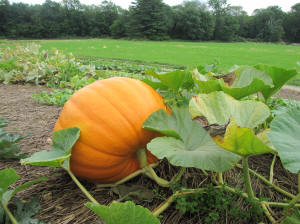|
 Pruning Evergreens Pruning Evergreens
This is the time of year, the last half of June, to prune
evergreens. This includes both needle-type and broadleaf
evergreens. If you’re wondering what a broadleaf evergreen is,
that includes holly, rhododendron, and azalea. The logic behind
pruning your evergreens at this time is to allow sufficient time
for regrowth to become hardened off before winter, and to keep
new growth from becoming too rank before the winter months.
Pruning evergreens is part art and part science, but mostly art.
A few simple rules to follow make the job results much more
pleasing. Upright growing evergreens, such as pines and spruces,
should not have the main leader cut off. This will destroy the
natural shape, and will make the resulting growth more
susceptible to breaking off. If individual branches are being
cut off, they should be cut back to a bud. This will allow the
bud to become the new main branch. You can also control growth
direction of branches in this way. If you are growing trees for
cut Christmas trees, all bets are off, as you are only dealing
with trees through the first seven years of their life or so.

Make sure you use the proper equipment. Individual pruning cuts
are best done with bypass loppers or pruning shears. These make
clean cuts without much damage to the remaining wood. The old
anvil type shears and loppers cut to a point, then crush the
remaining wood. For yews, junipers, and arborvitae that are
trained to a certain size of shape, you will want to use hedge
shears (electric or manual) that are sharp and properly
tightened. Most of these types of shears can cut up to about a
quarter of an inch in size.
When pruning evergreens, remember the “dead zone.” This is the
area toward the center of the plant that doesn’t receive much
light. It also has few needles or active buds. Cutting into the
dead zone will cause many years (or forever) of little green
growth. Also remember to prune so that the base of plants is
wider that the top. This allows sunlight to hit the bottom area
as well, and keeps plants from browning from the bottom up.
Pumpkins

Many pumpkins are already on their way, with seeds being sown a
month ago. While this practice is great for producing pumpkins
for pumpkin pie and blossoms, it really doesn’t work very well
for producing the Halloween jack-o-lantern pumpkins. The
Halloween pumpkins are best planted around Father’s Day. This
timing helps prevent the pumpkins from rotting before we get to
the end of October.
[to top of second column] |

Many different varieties are available, and they come in
many sizes and shapes. The small pumpkins, ranging from two to
five pounds, are called “pie” types. They are normally used for
cooking and fall decorations, and include the Baby Bear variety.
Intermediate and large varieties are primarily used for
jack-o-lanterns. Many of the newer varieties have stronger side
walls to aid in display and carving. The flesh of these
varieties is generally poor in quality and not used for cooking.
Processing pumpkins, that are canned commercially make poor
carving pumpkins, and are more like a buff colored watermelon in
appearance. The jumbo or mammoth varieties are mainly used for
exhibition. These jumbos can weigh in the 900 pound range. For
most homeowners, you might want to pass on these since moving a
900 pound pumpkin isn’t for everyone. The other option is to try
and grow one in place. The “mini” varieties are usually not
actually pumpkins, but they are gourds.
Pumpkins should be planted about now for carving or fall
decoration. Vining pumpkins need at least 50 – 100 square feet
per hill, with the larger pumpkins requiring the larger area.
Hills should be five to six feet apart and rows of hills should
be 10 – 15 feet apart. Each hill should have about four seeds
per hill, planted about an inch deep. The miniature varieties
such as the Jack-Be-Little are sometimes grown in rows with
seeds planted every eight to twelve inches, then thinned to
about two feet apart in the rows. Fall decoration pumpkins
should be cut from the vine before the vine dries in order to
have a good stem attached to the pumpkin, but after the color is
acceptable.

Keep the pumpkin bed free from weeds by shallow hoeing, and make
sure it is watered during extended dry periods. Major pests are
squash bugs, cucumber beetles, and vine borers. Most often,
frequent applications of an insecticide such as carbaryl will
help protect the new runners from the vine borers and also
control the beetles that transmit the wilt virus. Make sure no
applications are made to open blooms, since the blooms attract
the bees for pollination. It will help to apply insecticides in
late afternoon or early evening when the blossoms tend to be
closed.
[By JOHN FULTON, COUNTY EXTENSION
DIRECTOR SERVING LOGAN, MENARD, AND SANGAMON COUNTIES] |